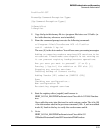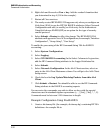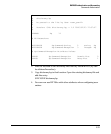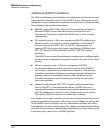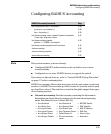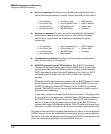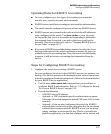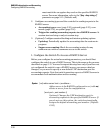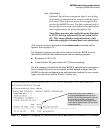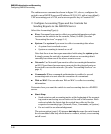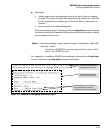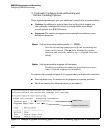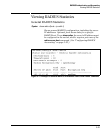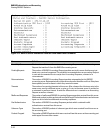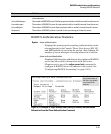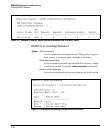
RADIUS Authentication and Accounting
Configuring RADIUS Accounting
[key < key-string >]
Optional. Specifies an encryption key for use during
accounting or authentication sessions with the speci-
fied server. This key must match the encryption key
used on the RADIUS server. Use this command only if
the specified server requires a different encryption key
than configured for the global encryption key.
Note: When you save the config file using Xmodem
or TFTP, the key information is not saved in the
file. This causes Radius authentication to fail
when the config file is loaded back onto the switch.
(For a more complete description of the radius-server command and its
options, turn to page 5-15.)
For example, suppose you want to the switch to use the RADIUS server
described below for both authentication and accounting purposes.
■ IP address: 10.33.18.151
■ A non-default UDP port number of 1750 for accounting.
For this example, assume that all other RADIUS authentication parameters
for accessing this server are acceptable at their default settings, and that
RADIUS is already configured as an authentication method for one or more
types of access to the switch (Telnet, Console, etc.).
Because the radius-server command
includes an acct-port element with a non-
default 1750, the switch assigns this value to
the accounting port UDP port numbers.
Because auth-port was not included in the
command, the authentication UDP port is set
to the default 1812.
Figure 5-11. Example of Configuring for a RADIUS Server with a Non-Default Accounting UDP Port Number
5-39



